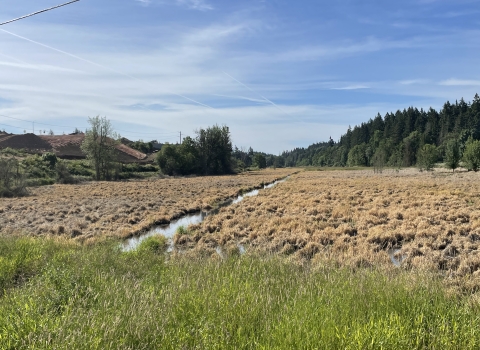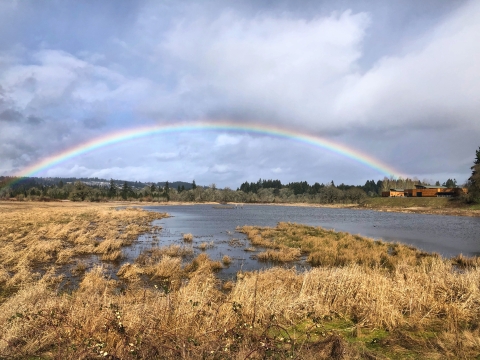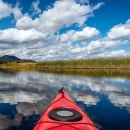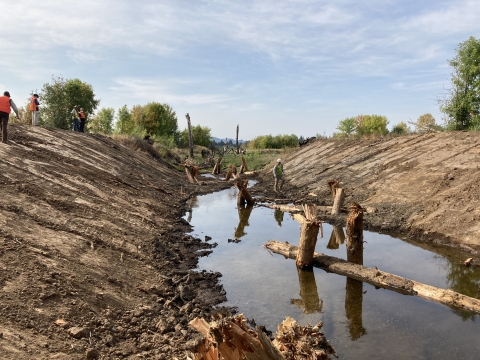Visit Us
Just a short ride from Portland, Oregon, the Tualatin River National Wildlife Refuge is a fantastic destination to see a wide variety of wildlife in many of our diverse habitats. Our year-round and seasonal walking trails allows visitors to immerse themselves in nature, and catch a glimpse of wildlife. Visitors can also engage with our refuge through numerous public programs or environmental education. Stop by our visitor center to learn more about the history of the refuge or walk out to our wetland overlook to see the variations of seasons.
Location and Contact Information
- Tualatin River National Wildlife RefugeView Details19255 SW Pacific Highway Sherwood, OR 97140-9292
About Us
Established in 1992 as a collaborative effort between the local community and the U.S. Fish and Wildlife Service, the Tualatin River National Wildlife Refuge offers visitors an opportunity to explore nature in the backyard of Portland, Oregon. Just outside of Portland city limits, visitors can see a wide variety of habitats, go bird watching, engage with our public education programs, or volunteer to aid in conservation and education.
What We Do
The National Wildlife Refuge System is a network of public lands and waters managed by the U.S. Fish and Wildlife Service. The System was established for the purpose of wildlife conservation, and directs all refuge actions and decisions. Utilizing the right management tools helps to further conservation and restoration of wildlife and their habitats.
Our Organization
Our Species
With a variety of habitat types and over 900 total acres of protected land and water, there are numerous species that call the refuge home, and many more that stop over for a few days or a season. Visitors may see wildlife such as deer, bald eagles, red-tailed hawks, garter snakes, or great blue herons. The refuge has many more species that often elude the public eye, including long-toed salamanders, river otters, and green herons.
Get Involved
National wildlife refuges partner with volunteers, youth groups, landowners, neighbors and local community members to make a lasting difference. Getting involved at Tualatin River National Wildlife Refuge is a great opportunity to learn new skills and help to conserve our public lands. With a variety of opportunities in a wide range of programs, anything from visitor services to habitat management, there is a place for everyone.
Projects and Research
Learn more about our recent Chicken Creek Restoration project, an exciting endeavor that will restore about 280 of wetland and riparian riparian
Definition of riparian habitat or riparian areas.
Learn more about riparian , and is an amazing opportunity to see a large-scale restoration project.
The refuge’s Rock Creek unit, located along Rock Creek and near Tonquin Road, is an important parcel as part of the larger Rock Creek Floodplain and surrounding forested areas. For the next 3-5 years, the site will undergo active restoration to return to a scrub-shrub wetland; a community of woody shrubs and emergent wetland plants that will be beneficial to a variety of...























